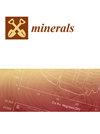使用自来水和海水对 HydroFloat® 流化床浮选槽中的气泡大小进行表征
IF 2.2
4区 地球科学
Q2 GEOCHEMISTRY & GEOPHYSICS
引用次数: 0
摘要
这项研究旨在分析 HydroFloat® 中气泡大小分布与海水和自来水的关系。研究确定了流化床浮选槽中气水两相系统中气泡大小的特征。使用两种起泡剂(MIBC 和聚乙二醇 F507)比较了海水和自来水的影响。实验设计用于研究浅层空气速度、浅层液体速度、发泡剂浓度和海水浓度等各种参数对气泡大小的影响。结果表明,临界凝聚浓度的顺序为 MIBC > F507。气泡大小随表层液体速度的增加而减小,表层气体速度和泡沫剂/海水浓度的影响则相反。方差分析结果表明,所有线性因子均显著,泡沫剂和海水浓度的二次项显著,而表层气速-表层液速的交互项对气泡大小的影响不显著。全局敏感性分析表明,对气泡大小有显著影响的变量是泡沫液浓度和海水浓度,其次是表层水流速。在所研究的条件下,表层气体速度对气泡大小的影响很小。本文章由计算机程序翻译,如有差异,请以英文原文为准。
Bubble Size Characterization in the HydroFloat® Fluidized-Bed Flotation Cell Using Tap Water and Seawater
This research aims to analyze the behavior of bubble size distribution in the HydroFloat® with seawater and tap water. The study characterized bubble size in a two-phase gas–water system in a fluidized-bed flotation cell. The impact of seawater was compared to tap water using two frothers, MIBC and polyglycol F507. The experimental design was used to investigate the influence of various parameters such as superficial air velocity, superficial liquid velocity, frother concentration, and seawater concentration on bubble size. The results indicate that the critical coalescence concentration followed the order of MIBC > F507. Bubble size decreases with increasing superficial liquid velocity, while the superficial gas velocity and frother/seawater concentration have the opposite effect. ANOVA results reveal that all linear factors are significant, the quadratic terms of the frother and seawater concentrations are significant, and the interaction term for the superficial air velocity–superficial liquid velocity is nonsignificant for bubble size. Global sensitivity analysis demonstrates that the variables significantly affecting bubble size are frother concentration and seawater concentration, followed by superficial water velocity. The superficial gas velocity has minimal impact on bubble size under the conditions studied.
求助全文
通过发布文献求助,成功后即可免费获取论文全文。
去求助
来源期刊

Minerals
MINERALOGY-MINING & MINERAL PROCESSING
CiteScore
4.10
自引率
20.00%
发文量
1351
审稿时长
19.04 days
期刊介绍:
Minerals (ISSN 2075-163X) is an international open access journal that covers the broad field of mineralogy, economic mineral resources, mineral exploration, innovative mining techniques and advances in mineral processing. It publishes reviews, regular research papers and short notes. Our aim is to encourage scientists to publish their experimental and theoretical results in as much detail as possible. There is no restriction on the length of the papers. The full experimental details must be provided so that the results can be reproduced.
 求助内容:
求助内容: 应助结果提醒方式:
应助结果提醒方式:


